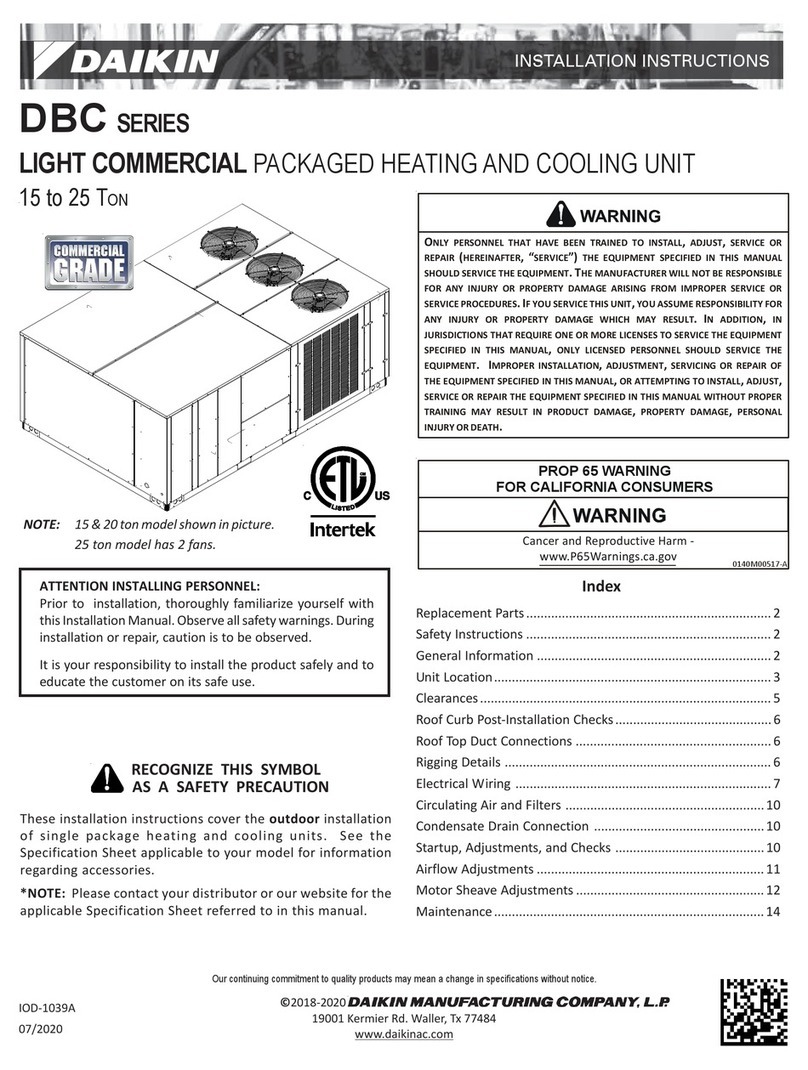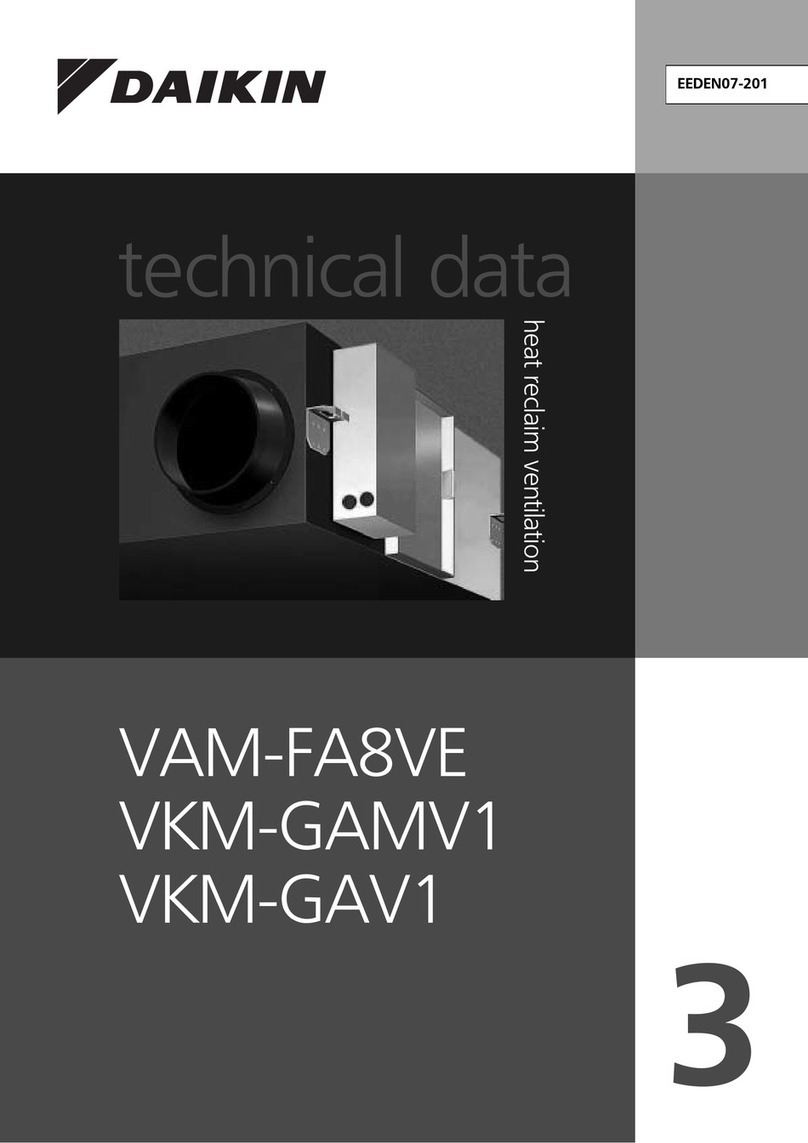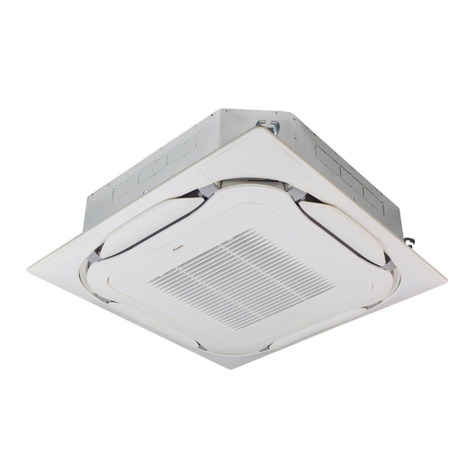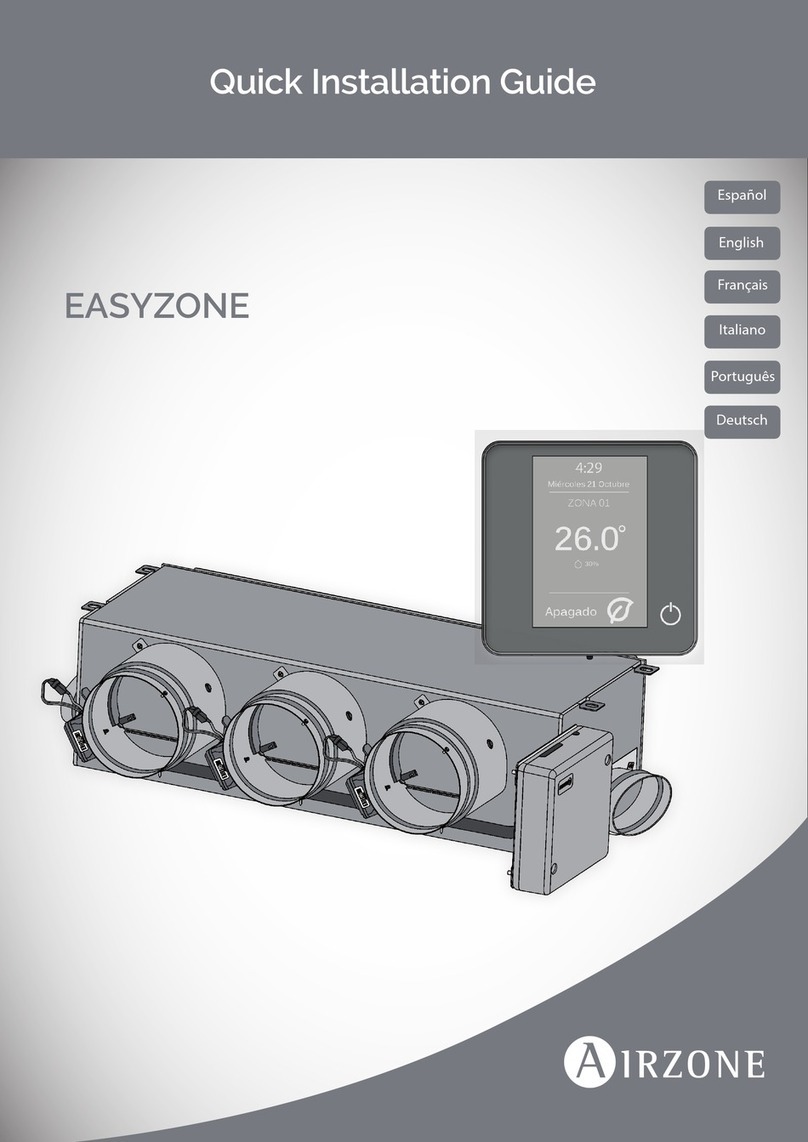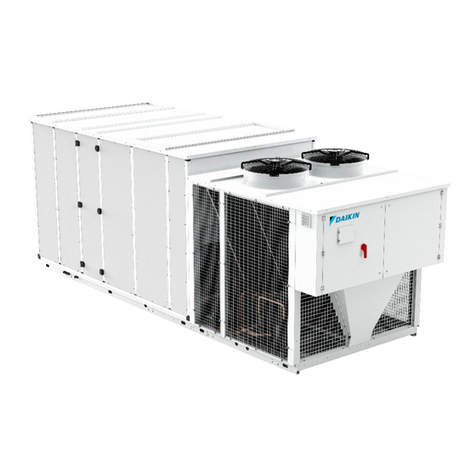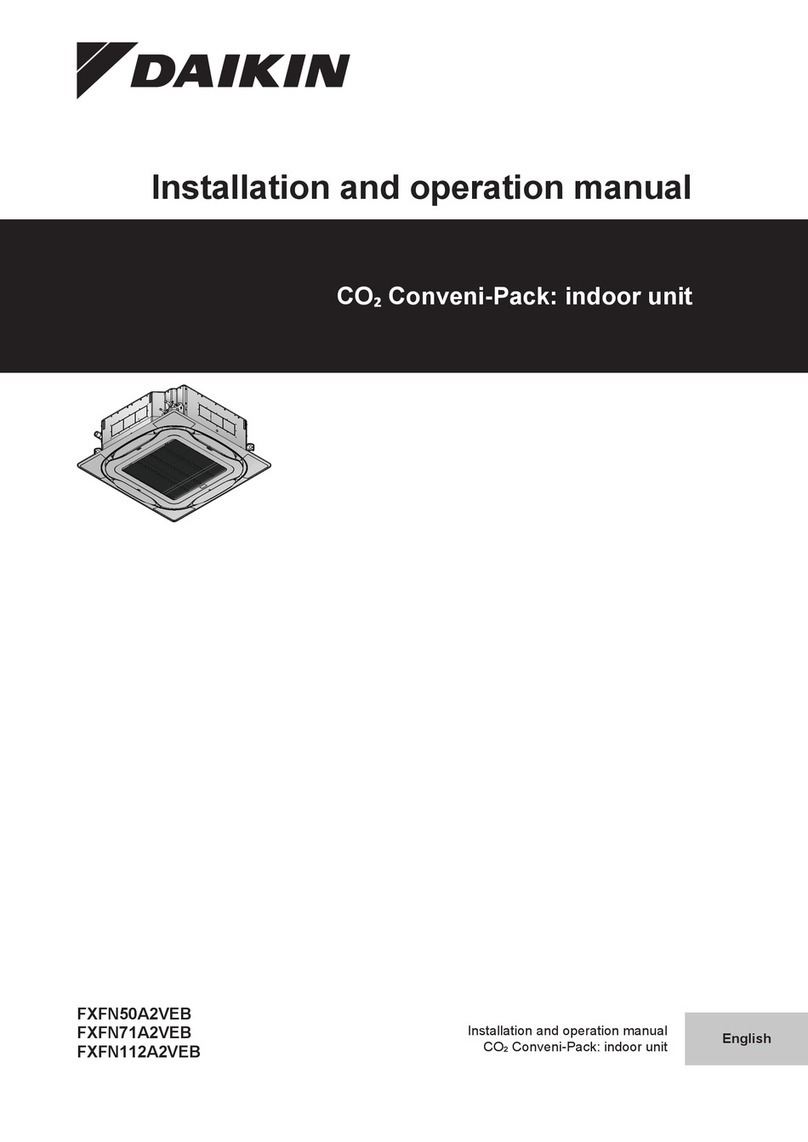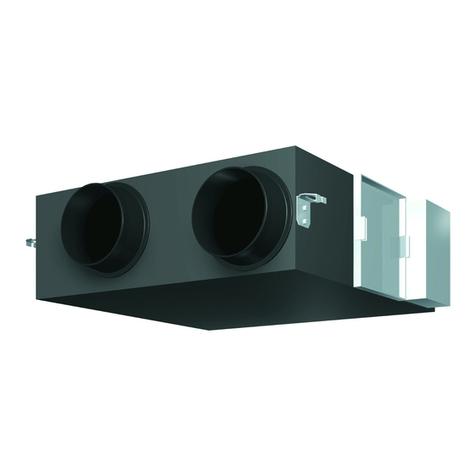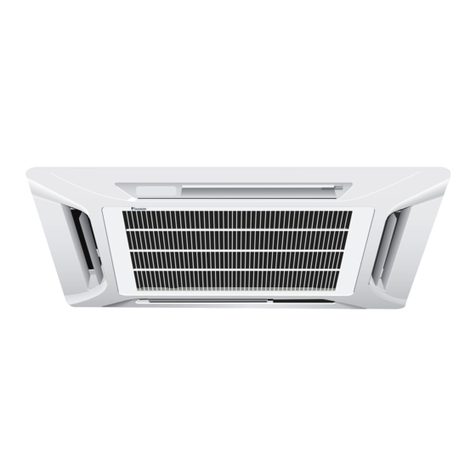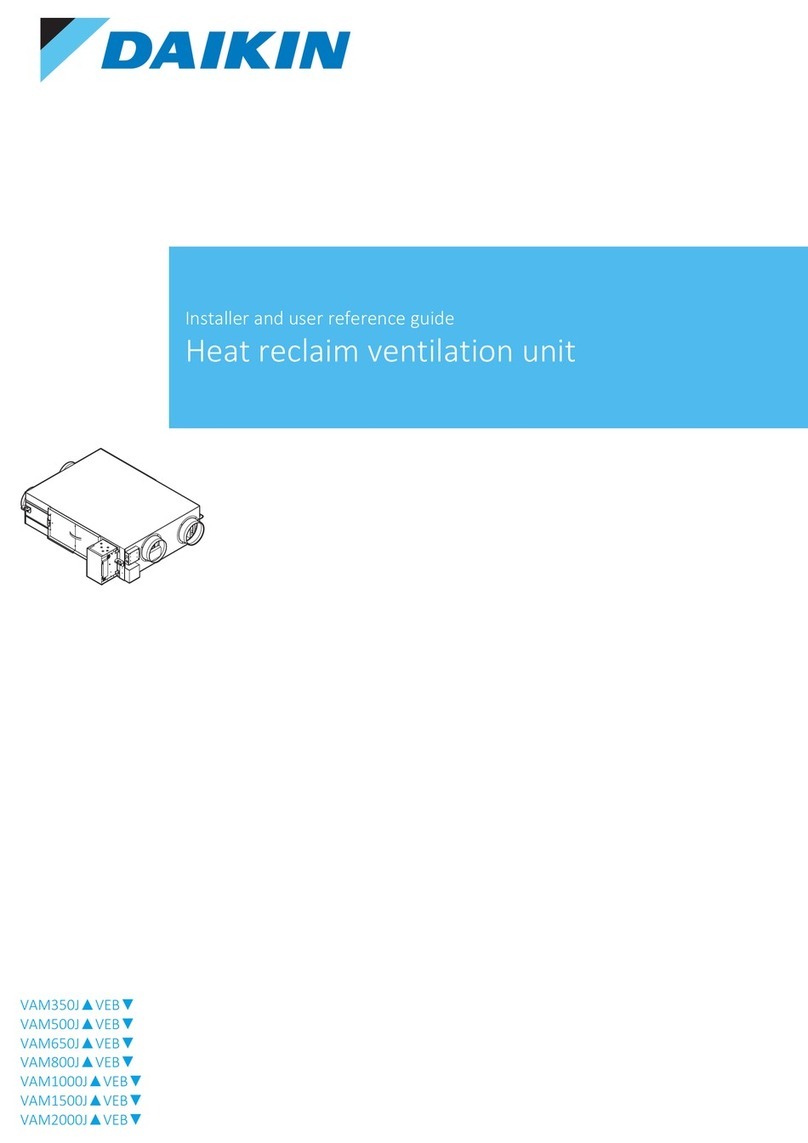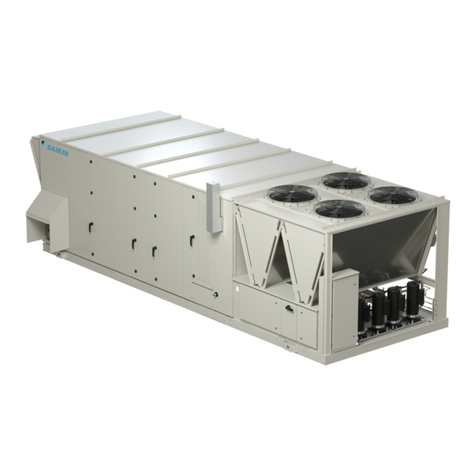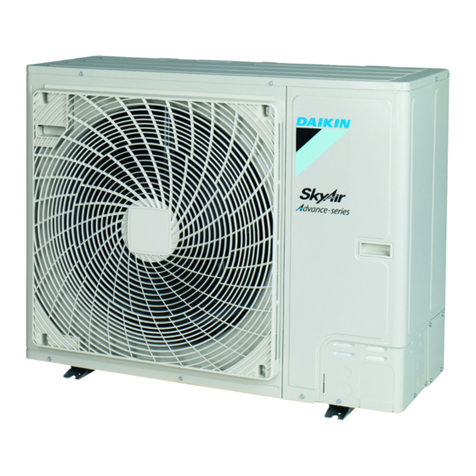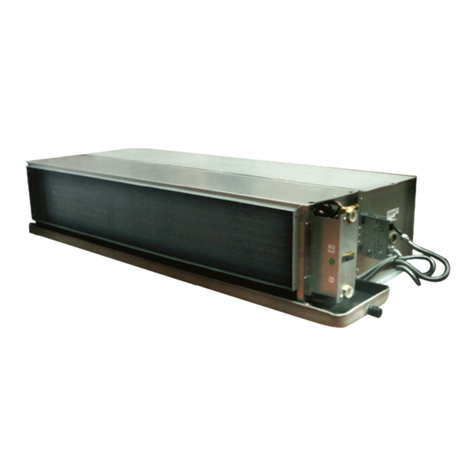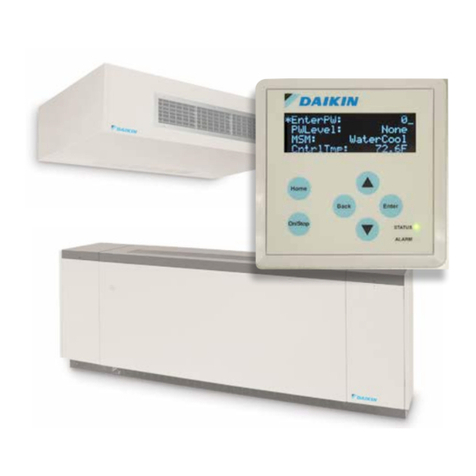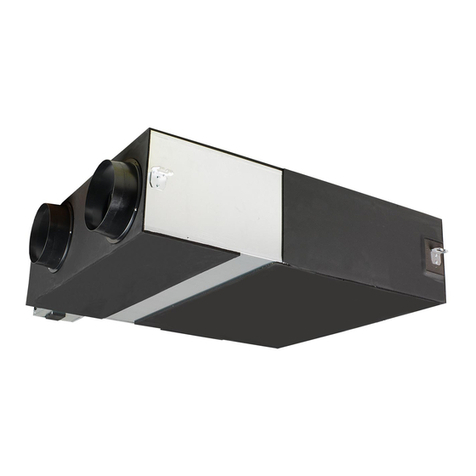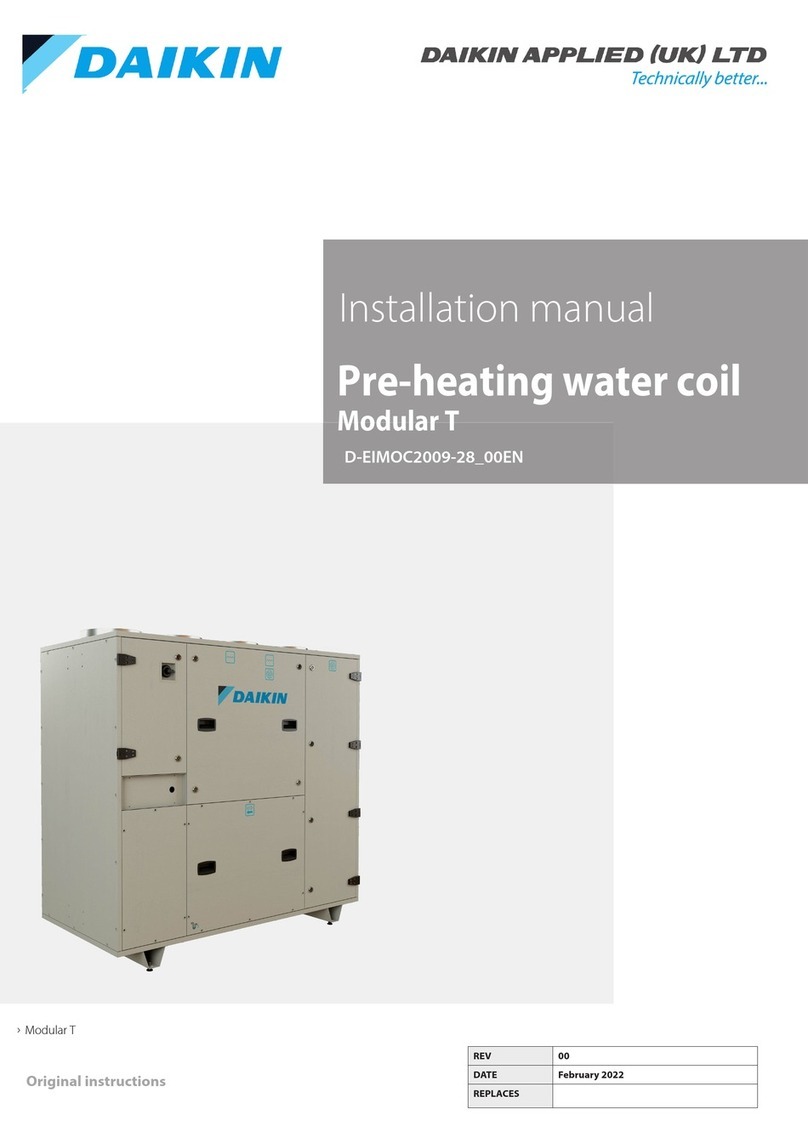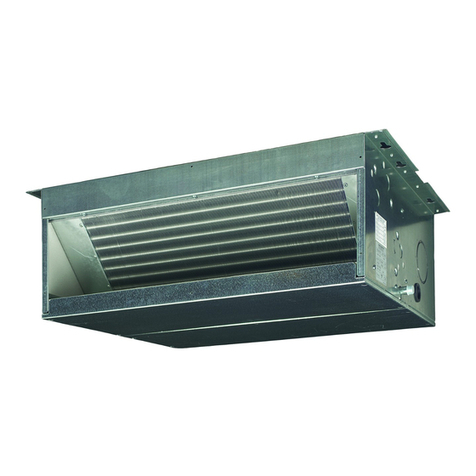
9
Complete information regarding tank sizing for vaporization,
recommended regulator settings and pipe sizing is available
from most regulator manufacturers and propane gas suppliers.
Since propane gas will quickly dissolve white lead or most
standard com mercial compounds, special pipe dope must
be used. Shellac base compounds resistant to the actions
of liqueed petroleum gases such as Gasolac®, Stalactic®,
Clyde’s® or John Crane® are satisfactory.
See below for typical propane gas piping.
Maximum
Continuous
11" W.C.
Second Stage
Regulator
First Stage
Regulator
Sizing Between First and Second Stage Regulator
Maximum Propane Capacities listed are based on 1 PSIG Pressure Drop at 10
PSIG Setting. Capacities in 1,000 BTU/HR
3/8" 1/2" 5/8" 3/4" 7/8" 1/2" 3/4"
30 309 700 1,303 2,205 3,394 1,843 3,854
40 265 599 1,115 1,887 2,904 1,577 3,298
50 235 531 988 1,672 2,574 1,398 2,923
60 213 481 896 1,515 2,332 1,267 2,649
70 196 446 824 1,394 2,146 1,165 2,437
80 182 412 767 1,297 1,996 1,084 2,267
90 171 386 719 1,217 1,873 1,017 2,127
100 161 365 679 1,149 1,769 961 2,009
150 130 293 546 923 1,421 772 1,613
200 111 251 467 790 1,216 660 1,381
250 90 222 414 700 1,078 585 1,224
300 89 201 378 634 976 530 1,109
350 82 185 345 584 898 488 1,020
400 76 172 321 543 836 454 949
To convert to Capacities at 15 PSIG Settings -- Multiply by 1.130
To convert to Capacities at 5 PSIG Settings -- Multiply by 0.879
SCHEDULE 40
Sizing Between Single or Second Stage Regulator and Appliance*
Maximum Propane Capacities Listed are Based on 1/2" W.C. Pressure Drop at
11" W.C. Setting. Capacities in 1,000 BTU/HR
3/8" 1/2" 5/8" 3/4" 7/8" 1/2"
10 49 110 206 348 539 291 608 1,146 2,353 3,525
20 34 76 141 239 368 200 418 788 1,617 2,423
30 27 61 114 192 296 161 336 632 1,299 1,946
40 23 52 97 164 253 137 284 541 1,111 1,665
50 20 46 86 146 224 122 255 480 985 1,476
60 19 42 78 132 203 110 231 436 892 1,337
80 16 36 67 113 174 94 198 372 764 1,144
100 14 32 59 100 154 84 175 330 677 1,014
125 12 28 52 89 137 74 155 292 600 899
150 11 26 48 80 124 67 141 265 544 815
200 10 22 41 69 106 58 120 227 465 697
250 919 36 61 94 51 107 201 412 618
300 818 33 55 85 46 97 182 374 560
350 716 30 51 78 43 89 167 344 515
400 715 28 47 73 40 83 156 320 479
*DATA IN ACCORDANCE WITH NFPA PAMPHLET NO. 54
SCHEDULE 40
CAUTION
T
O EVENT OTY DAMAGE OR ERSONAL INJURY D UE T O FIRE, THE
FOLLOWING I NSTRUCTIONS M UST BE ERFORMED R EGARDING G AS
CONNECTIONS AND ESSURE T ESTING:
•
T
HE U NIT AND ITS G AS CONNECTIONS M UST BE L EAK TESTED B EFORE
ACING IN O RATION.
B
ECAUSE O F THE DANGER O F EXOSION OR
FIRE, NEVER USE A MATCH OR O N FLAME TO TEST F OR LEAKS.
N
EVER
EXCEED S CIFIED RESSURES F OR TESTING.
H
IGHER ESSURE M AY
DAMAGE G AS V ALVE A ND C AUSE O VERFIRING WHICH MAY RESULT I N
EMATURE HEAT E XCHANGE F AILURE.
•
T
HIS UNIT A ND ITS SHUT-OFF V ALVE M UST BE D ISCONNECTED F ROM
THE GAS SY DURING ANYRESSURE TESTING OF THAT SYSTEM AT
TEST ESSURES IN EXCESS OF 1/2
G
(3.48 K
A).
•
T
HIS UNIT M UST BE I SOLATED FROM T HE G AS S Y SYSTEM B Y
CLOSING ITS MANUAL SHUT-OFF V ALVE D URING A NY RESSURE
TESTING OF T HE G AS S Y NG S YSTEM AT T EST ESSURES
EQUAL TO O R LESS T HAN 1/2
G
( 3.48 K
A).
WARNING
T
O AVOID ERTY DAMAGE OR ERSONAL INJURY, BE S URE THERE IS
NO ON FLAME IN T HE V ICINITY DURING A IR B LEEDING.
There will be air in the gas supply line after testing for leaks on
a new installation. Therefore, the air must be bled from the line
by loosening the ground joint union until pure gas is expelled.
Tighten union and wait for ve minutes until all gas has been
dissipated in the air. Be certain there is no open ame in the
vicinity during air bleeding procedure. The unit is placed in
operation by closing the main electrical disconnect switch for
the unit.
PROPANE GAS INSTALLATIONS
WARNING
TO AVOID OTY DAMAGE, SONAL INJURY O R DEATH DUE TO F IRE
OR E LOSION C AUSED BY A RONE G AS L EAK, I NSTALL A G AS
DETECTING WARNING DEVICE. SINCE RUST CAN REDUCE T HE L EVEL
OF O DORANT IN ANE GAS, A G AS DETECTING W ARNING D EVICE
IS T HE O NLY RELIABLE W AY T O DETECT A RONE G AS L EAK.
CONTACT A L OCAL RONE G AS S IER ABOUT INSTALLING A
GAS DETECTING WARNING DEVICE.
Propane gas conversion kits must be
installed to convert units to propane gas.
All propane gas equipment must conform to the safety
standards of the National Board of Fire Underwriters (See
NBFU Manual 58).
For satisfactory operation, propane gas supply pressure must
be within 9.7 - 10.3 inches W.C. at the manifold with all gas
appliances in operation. Maintaining proper gas pressure
depends on three main factors:
1. Vaporization rate, which depends on (a) temperature of
the liquid, and (b) wetted surface area of the container or
containers.
2. Proper pressure regulation.
3. Pressure drop in lines between regulators, and between
second stage regulator and the appliance. Pipe size
required will depend on length of pipe run and total load of
all appliances.
